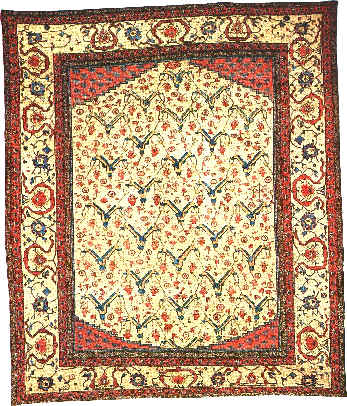|
|
Hamadan carpet is gross textured and thick with long pile.
In the past, when villagers used hand-spun wool or high quality wool of Kermanshah, Kurdistan and Sabzevar, there was accurate observation, control of quality and purity of carpets; but after the second World War, owing to increment of carpet price in world market using ready colored skein was in practice and this resulted the decline of quality in carpets. Wool used in carpet weaving, in the past had a special specification.
The best of it could be found in West, specially in cold territories of Kurdistan, Kermanshah, Azerbaijan and Hamadan. Wool of Maku and Sanandaj sheep wool of Lor tribes were the best and using those kind of wool created fame and prominence for carpets of this region.
Wool produced in cold regions has a better finesse and long fiber which is a preference for
using in a domestic carpet.
Type of thread used in carpets are 4-6 meters and scarcely 8 meters long. In this region hand spun pile is applied to produce the thread. Silk of the carpets of this region is silk No. 14, which is produced in Qom.
In the past, dyes of rustic carpets of Hamadan were mostly natural or herbal.
At present source of dyes, as other Persian carpets is converted to non-scientific-chemical or synthetic colors.
Consumers colors are: light green, green and dark green, golden yellow, orange, dark-blue, light-blue, red, light rose, pink, dark cream turquoise and maroon.

Haris: Rug, 411x353 cm
|
|

